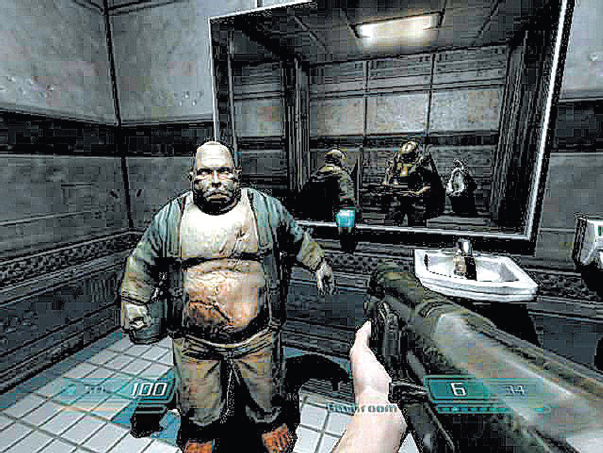Gaming on Home Computers

Very early home computer games, like the early console games, often mimicked (and sometimes ripped off) popular arcade games like Frogger, Centipede, Pac-Man, and Space Invaders. Computer-based gaming also featured certain genres not often seen on consoles, like the digitization of card and board games. The early days of the personal computer saw the creation of electronic versions of games like Solitaire, Hearts, Spades, and Chess, all simple games still popular today. But for a time in the late 1980s and much of the 1990s, personal computers held some clear advantages over console gaming. The versatility of keyboards, compared with the relatively simple early console controllers, allowed for ambitious puzzle-solving games like Myst. Moreover, faster processing speeds gave some computer games richer, more detailed three-dimensional (3-D) graphics. Many of the most popular early first-person-shooter games like Doom and Quake were developed for home computers rather than consoles.
As consoles caught up with greater processing speeds and disc-based games in the late 1990s, elaborate personal computer games attracted less attention. But more recently, PC gaming has experienced a resurgence, due to the advent of free-to-play games (like Spelunky and Neptune’s Pride), subscription games (such as World of Warcraft and Diablo 3), and social media games (such as FarmVille)—all trends aided by the Internet. With powerful processors for handling rich graphics, and more stable Internet connectivity for downloading games or playing games via social media sites and other gaming sites, personal computers can adeptly handle a wide range of activities.